Special Report
These 46 Critical Days Defined Our Year of Living in a Pandemic
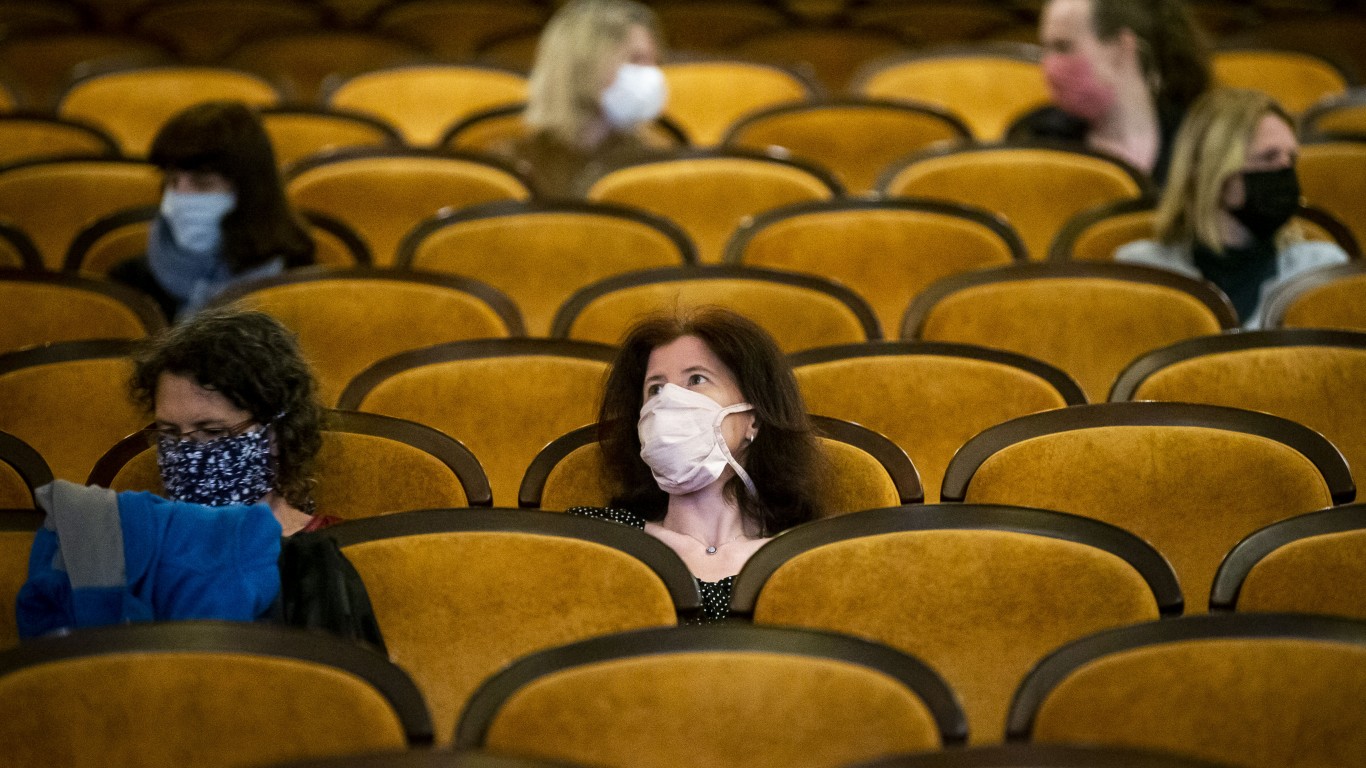
Published:

Exactly a year ago, on March 11, 2020, the World Health Organization officially declared the novel coronavirus a pandemic. What came next was an extraordinary and unprecedented year of lockdowns, significant economic struggles, and living in the shadow of COVID-19.
As we enter the second year of the pandemic, 24/7 Tempo reviewed news archives to create a timeline of key milestones in the development of the outbreak.
The novel coronavirus, which is thought to have surfaced in a Chinese seafood and poultry market, has spread to at least 192 countries and regions, killing more than 2.6 million people and infecting more than 118 million.
An end seems to be near as there are several COVID-19 vaccines that have been deemed safe and effective and are being distributed around the world. According to data collected by Bloomberg, more than 326 million COVID-19 vaccine doses developed by various companies have been administered across 121 countries as of March 11, 2021. With vaccines becoming more available each day, the latest rate of vaccination is about 8.35 million doses a day.
In the U.S., about 96 million doses have been administered, and last week’s average was about 2.17 million doses a day, according to the Centers for Disease Control and Prevention.
The U.S. government has recently announced that the country will have enough doses to inoculate every adult American by the end of May — here are the COVID-19 vaccination priorities in each state.
Click here to for the 46 milestones of one year of living in a pandemic.
To create a timeline of 46 key milestones in the spread of the coronavirus since March 11, 2020 when it was officially declared a pandemic by the World Health Organization, 24/7 Tempo reviewed press releases and announcements issued by the WHO, the CDC, and the U.S. Food and Drug Administration. We also reviewed scientific studies’ summaries published in medical journals, including the New England Journal of Medicine.

Mar 11: WHO declares coronavirus a pandemic
The WHO declares COVID-19 a pandemic. The organization made the assessment after two weeks during which the number of new COVID-19 cases outside mainland China has increased 13-fold, and the number of affected countries has tripled.
[in-text-ad]

Mar 13: Trump declares national emergency
President Donald Trump declares a national emergency to “unleash the full power of the federal government” in dealing with the coronavirus pandemic as cases across the U.S. increase.
Mar 17: Coronavirus now present in all 50 states
West Virginia is the last state to report a case of the novel coronavirus.

Mar 17: EU closes its borders to all nonessential travel
The 26 countries of the European Union, home to over 400 million people, announce a coordinated ban on all nonessential travel from non-member countries for 30 days. The U.K., which is no longer part of the EU, does not take part in the ban.
[in-text-ad-2]

Mar 19: Italy’s death toll surpasses China’s
Italy’s death toll from COVID-19 reaches 4,032 as the country becomes the first to surpass China in number of deaths. Italy reports 627 people died of the disease on March 19. In China, 3,249 people have died from COVID-19 by March 19.

Mar 19: California first state to issue stay-at-home order
Puerto Rico was the first U.S. territory to issue a mandatory stay-at-home order on March 15. California followed suit four days later, becoming the first state to issue such an order, according to the CDC.
[in-text-ad]

Mar 19: State Department issues a blanket Level 4 ‘Do Not Travel’ advisory
The U.S. Department of State issues the highest level advisory against all international travel. Americans are warned against traveling anywhere abroad due to the fast spread of the novel coronavirus.

Mar 20: New York City becomes US outbreak hotspot
With cases of confirmed coronavirus cases Increasing from 183 to 5,151 in six days, New York City becomes the hardest hit by the pandemic in the U.S. There are a total of 8,377 reported cases in the entire state.

Mar 22: Global cases double in a week, reaching almost 330,000
The number of confirmed coronavirus cases worldwide more than double in a week to nearly 330,000.
The U.S. surpassed 32,000 confirmed cases, 10 times as many as the week before.
[in-text-ad-2]
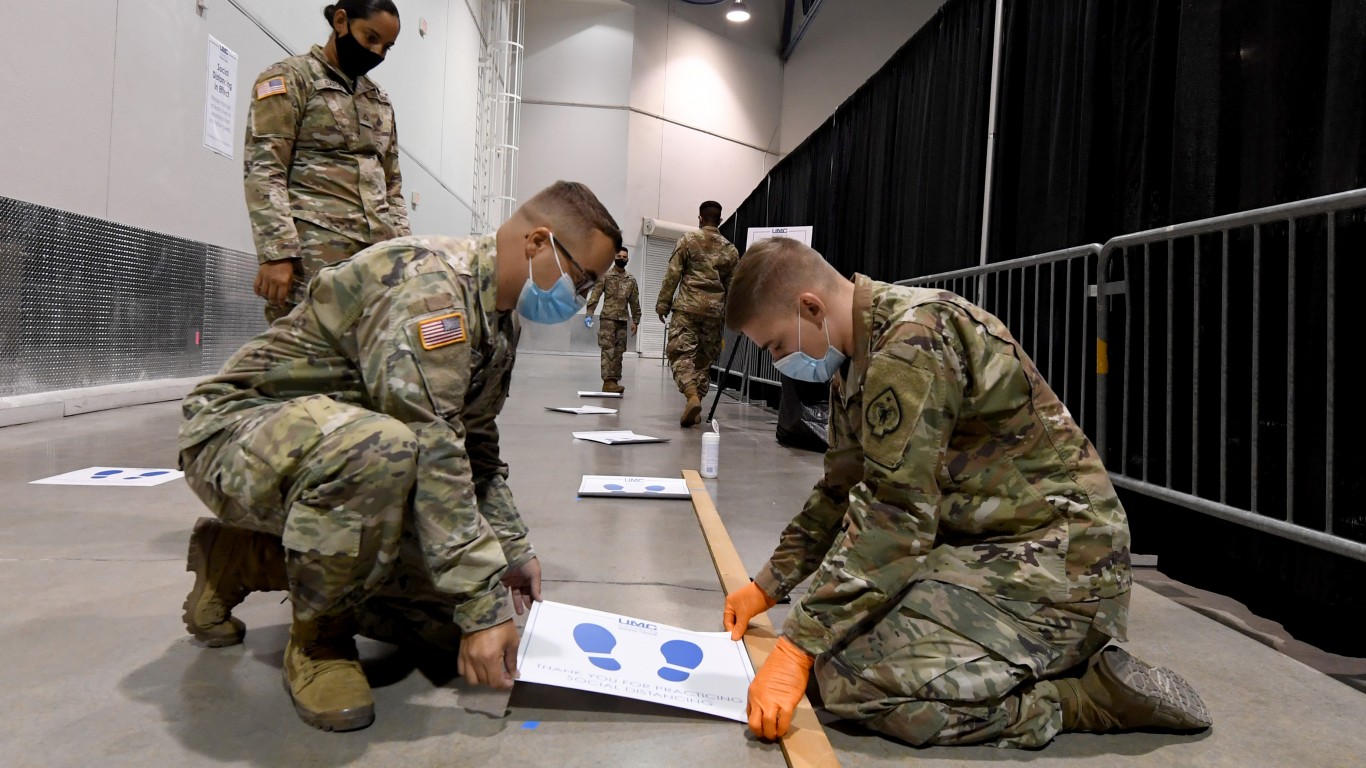
Mar 24: US National Guard activated in all 50 states
The U.S. military expands its coronavirus response effort. The National Guard is now active across the country. They are to assist state response efforts to mitigate and control the coronavirus pandemic.
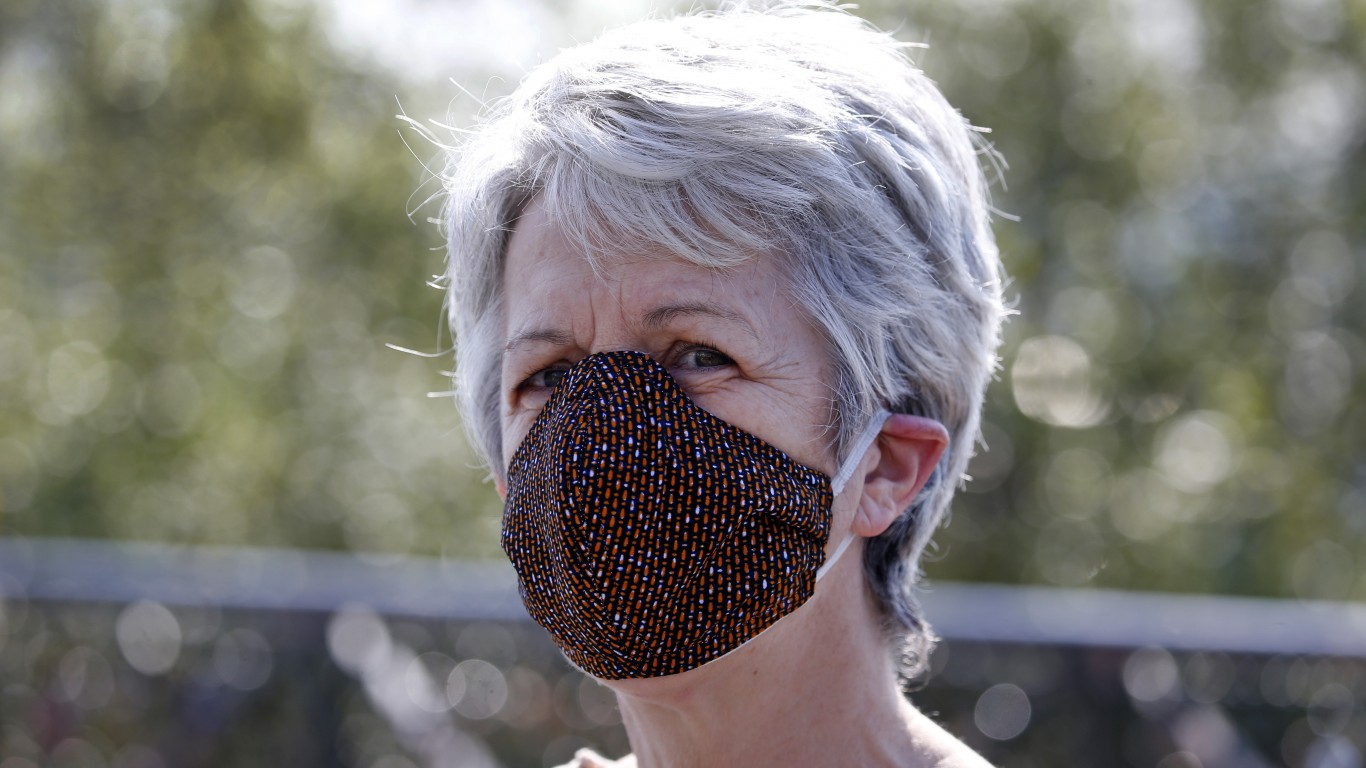
Mar 25: Lockdowns affect nearly one-third of the world’s population
Partial and total lockdowns in the U.S., India (population: 1.4 billion), and other countries now affect about one-third of the world’s population — about 2.5 billion people.
[in-text-ad]

Mar 31: Model suggests US coronavirus death toll to reach 100,000
Scientists say that the coronavirus pandemic is estimated to kill between 100,000 and 240,000 people in the U.S., warning the death toll can be much higher if people don’t follow guidelines for public health measures like social distancing.
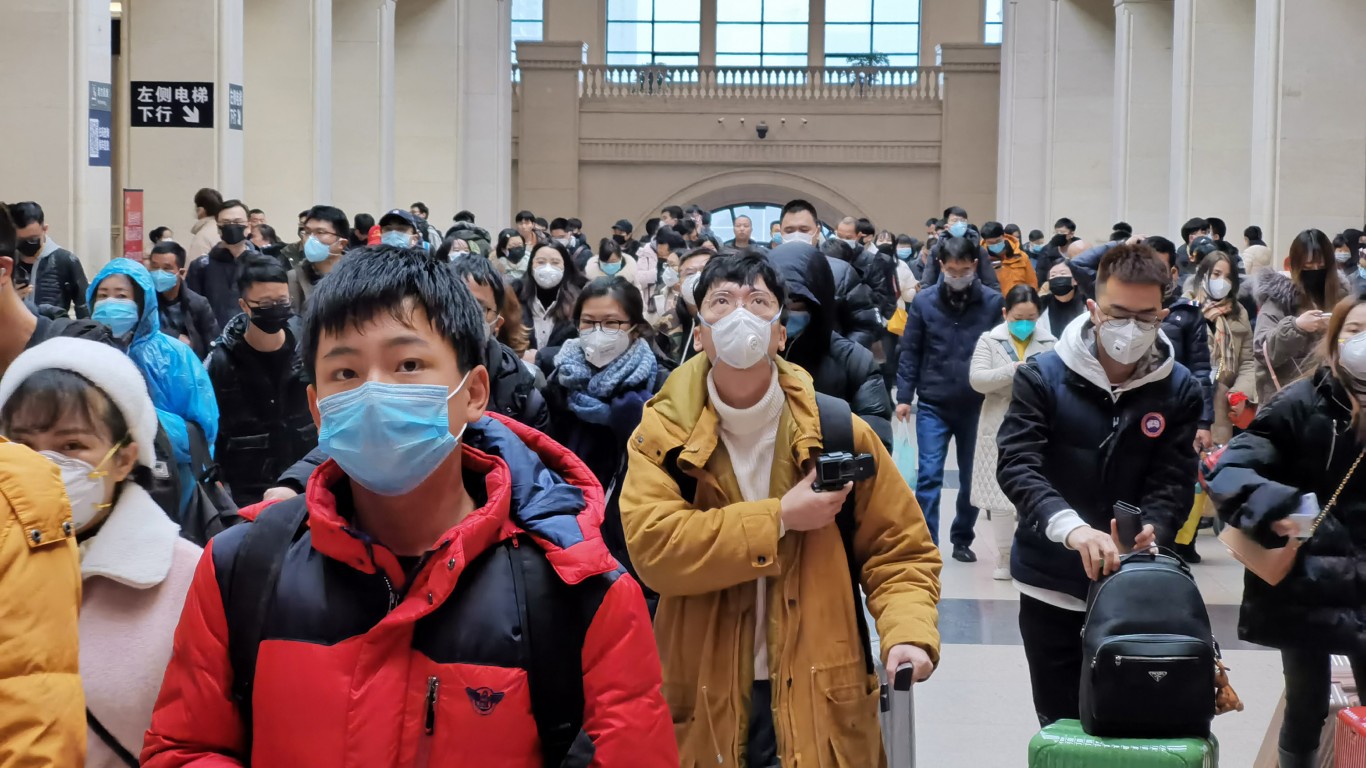
Apr 1: CDC reports transmission can occur before symptom onset
The Centers for Disease Control and Prevention reports on evidence of COVID-19 transmission from pre-symptomatic people. This would make containment much more difficult. About 12.6% of transmissions in Hubei Province, China, may have occurred before the infected person began showing symptoms. It can take up to 14 days for an infected person to show symptoms — if at all.
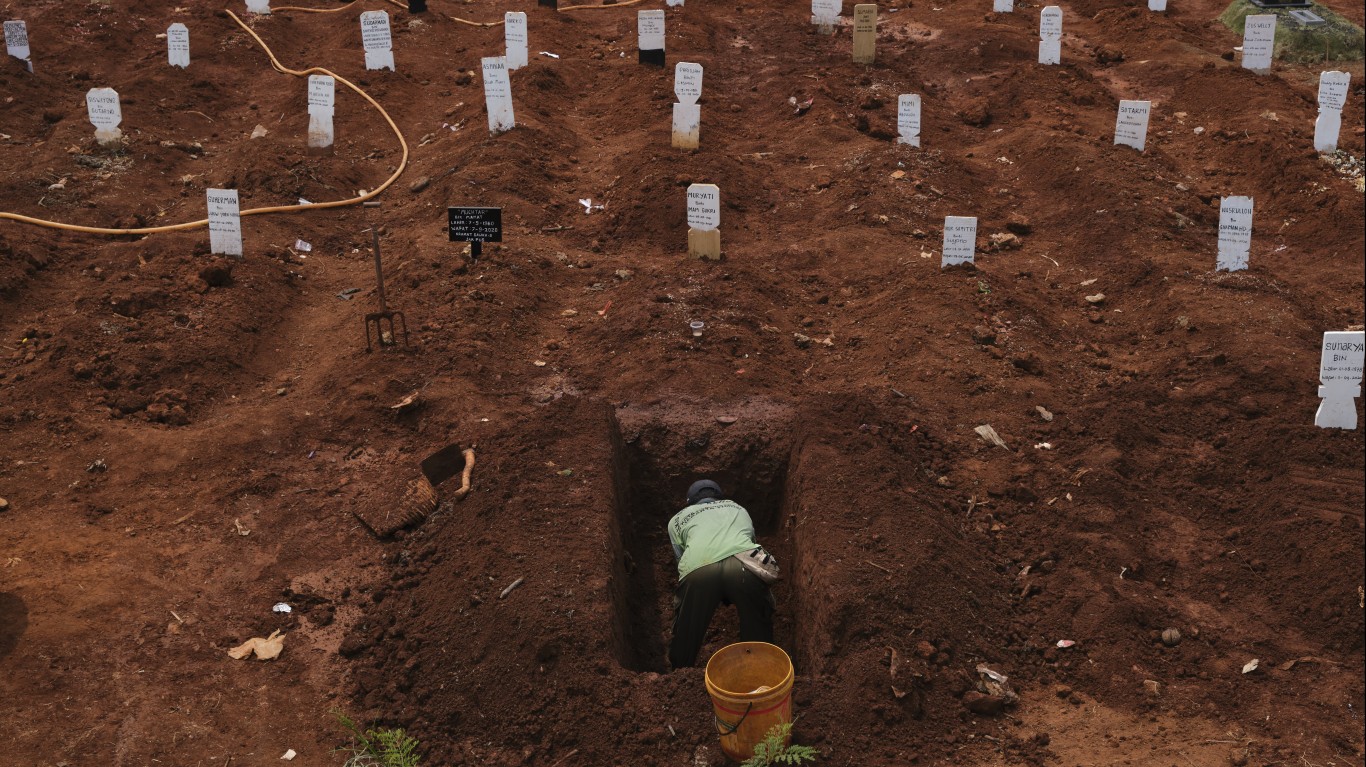
Apr 2: Global cases hit 1 million
The coronavirus pandemic hits a grim milestone — 1 million confirmed cases. More than 51,000 people worldwide have died.
[in-text-ad-2]
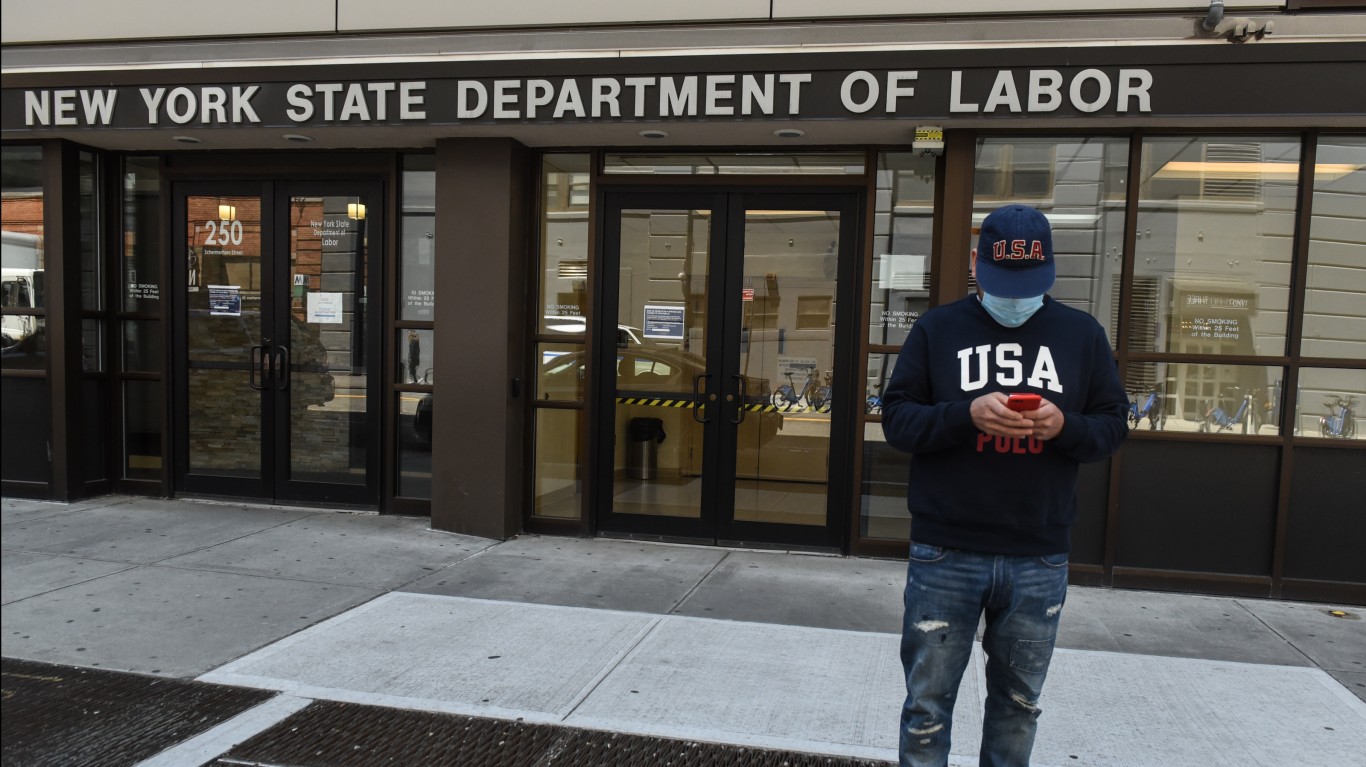
Apr 2: Over 10 million Americans file for jobless claims
A record 6.6 million people filed new unemployment claims in the week ending on March 28, more than double the number of claims filed the previous week. Overall, more than 10 million Americans applied for unemployment benefits in March.
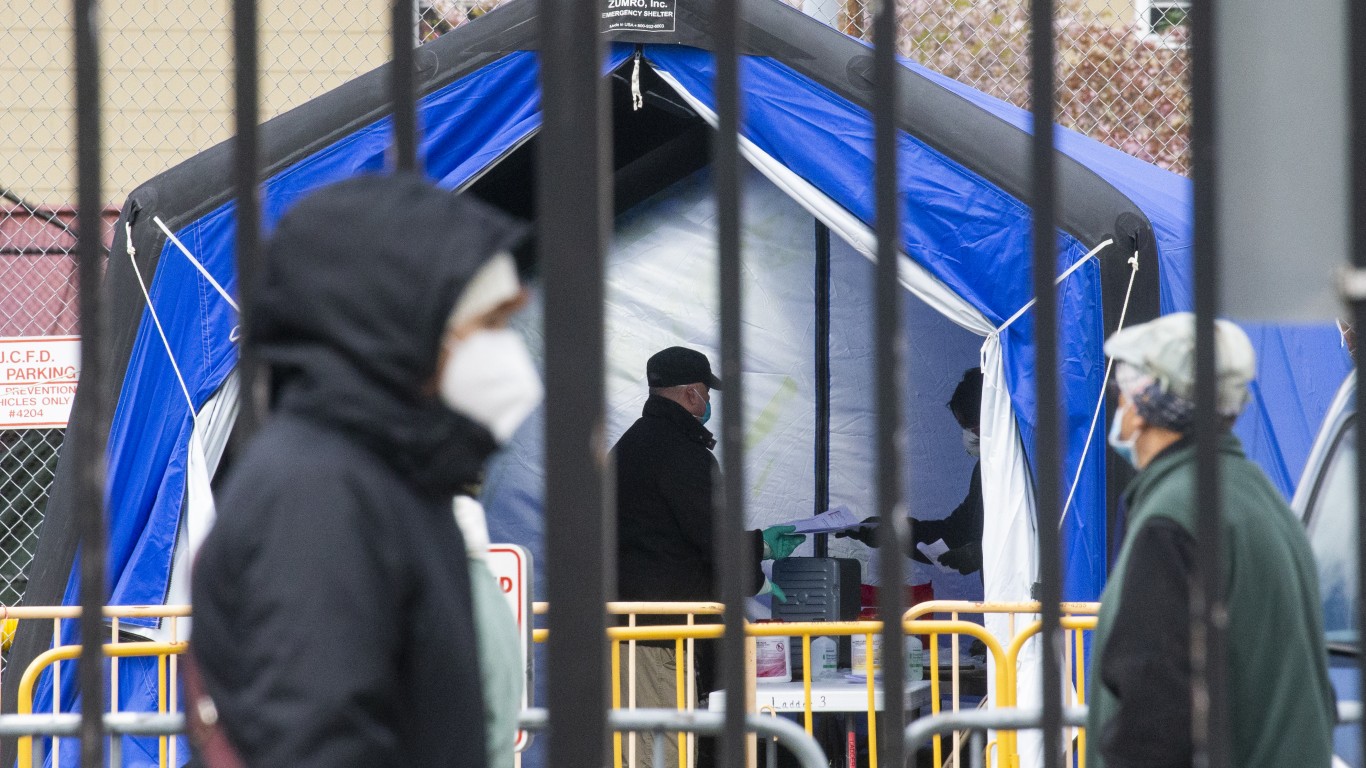
Apr 8: NJ first state to issue a face covering mandate
Gov. Phil Murphy signs an executive order, which also requires people to wear cloth face coverings unless they are under 2 years old or have a medical condition that can make breathing with a mask difficult.
[in-text-ad]

Apr 10: New York reports more coronavirus cases than any country
New York state cumulative caseload is higher than any single country outside the U.S., at nearly 160,000. (U.S.’s cumulative caseload is 462,000 cases). Spain has reported 153,000 cases by April 10, and Italy 143,000. China, where the novel coronavirus was first detected, has reported 82,000 cases by that date.
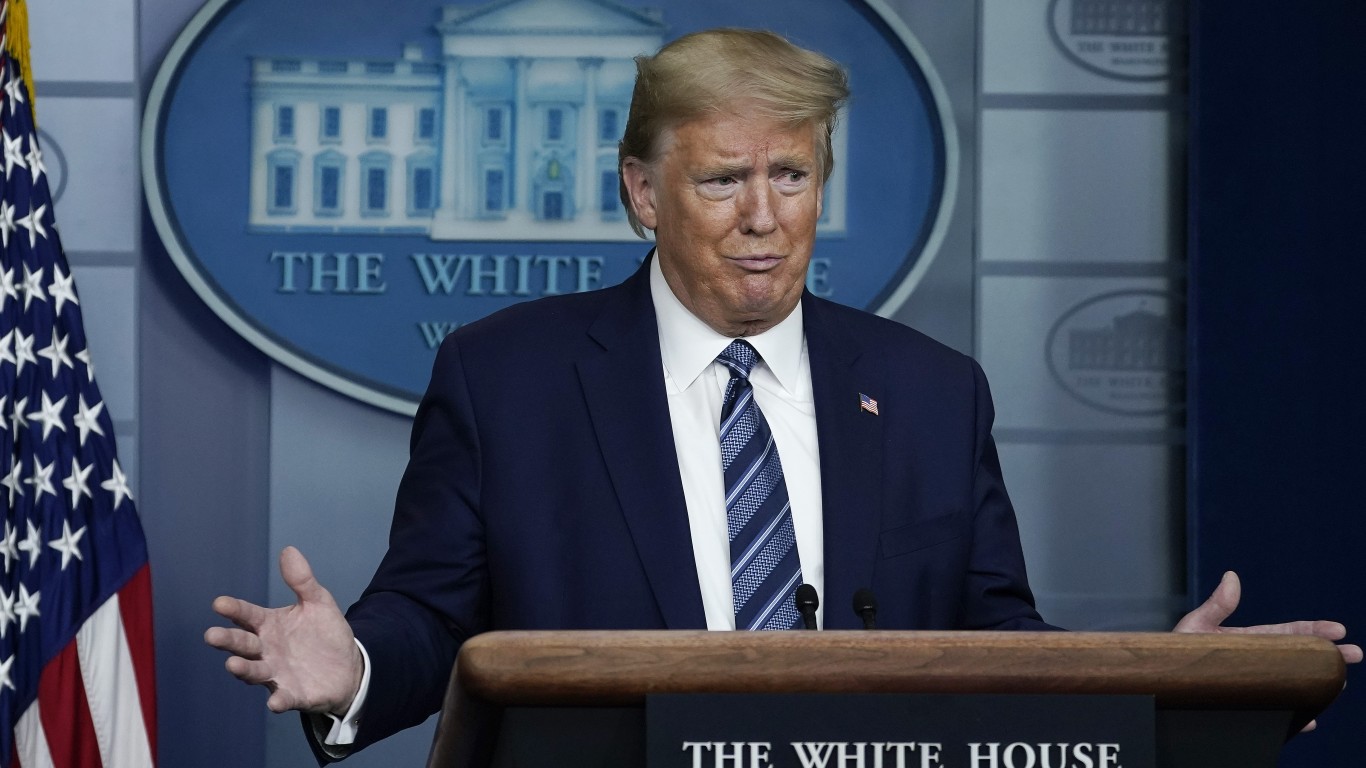
Apr 22: Trump temporarily suspends immigration to the US
Trump signs an executive order suspending immigration to the U.S. for 60 days. People who already have green cards or health care professionals seeking an immigrant visa to help fight COVID-19 in the U.S. are exempt.

May 27: US reaches 100,000 COVID-19 deaths
The U.S. reaches another bleak coronavirus milestone — 100,000 people have died from COVID-19 in the fourth month since the novel coronavirus was first confirmed in the country.
[in-text-ad-2]
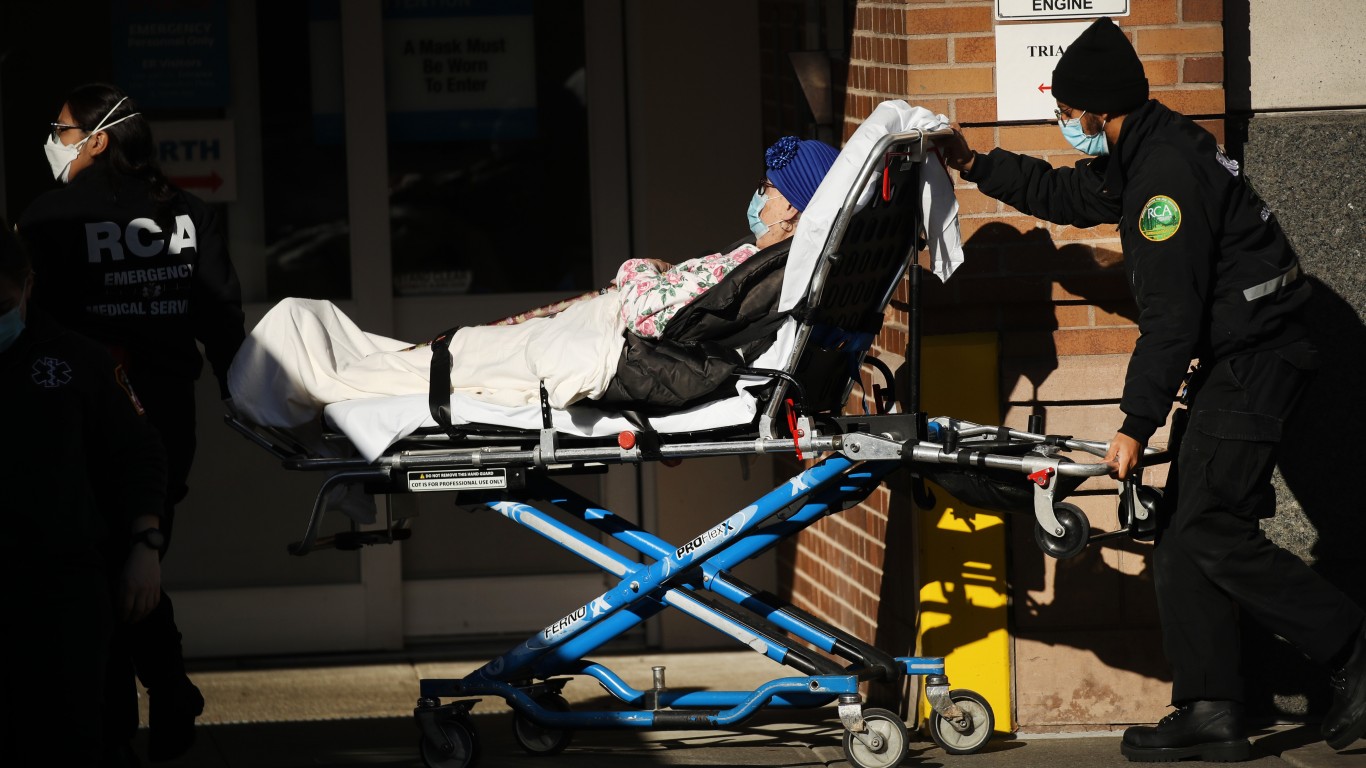
Jun 8: Lockdown measures worldwide may have prevented 500 million COVID-19 infections
Lockdowns, social distancing, travel restrictions, and other measures taken to slow down the coronavirus spread may have prevented about 500 million coronavirus infections in six countries, including China and the U.S., according to a study published in the journal Nature.
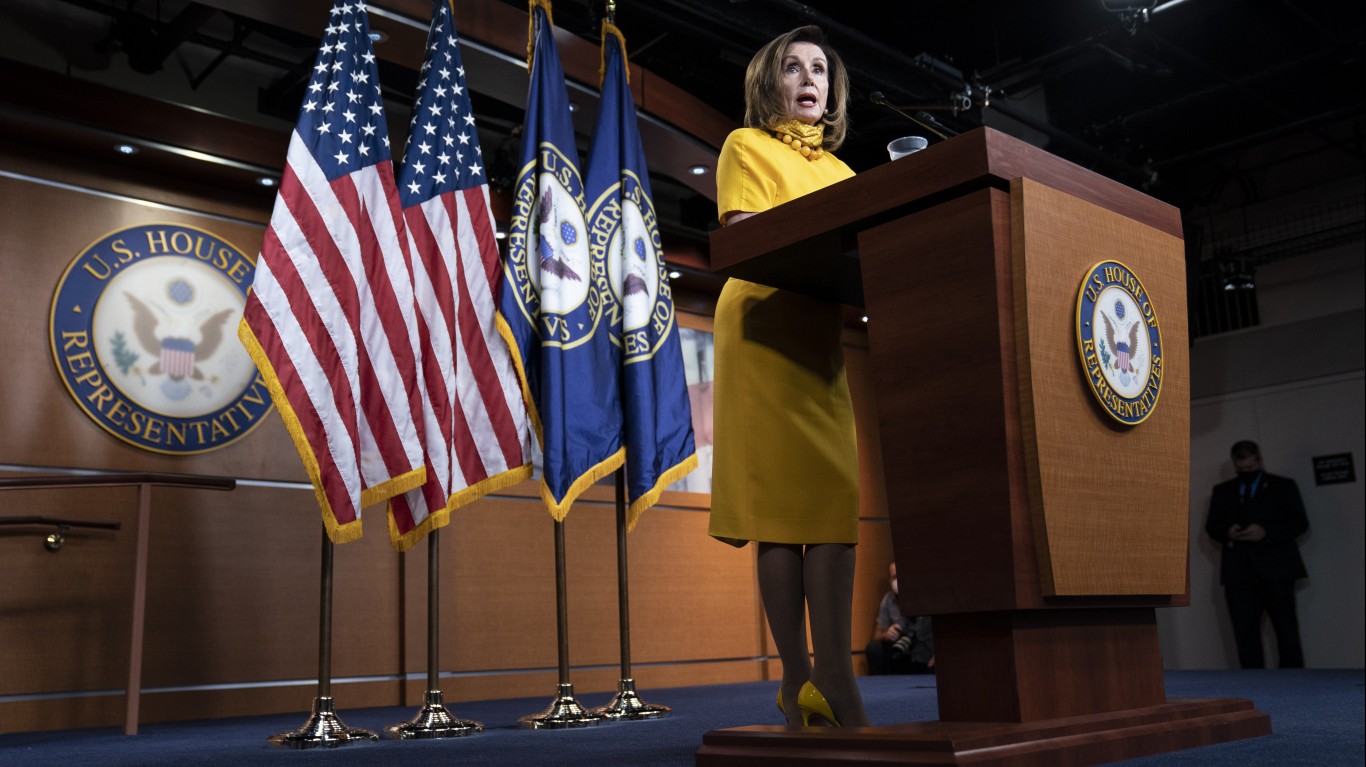
Jun 11: Model projects spike in coronavirus death toll in September and later
A new model, cited by the White House, projects that coronavirus deaths are expected to decline before they sharply rise in September, reaching up to 290,000 fatalities by Oct. 1.
[in-text-ad]
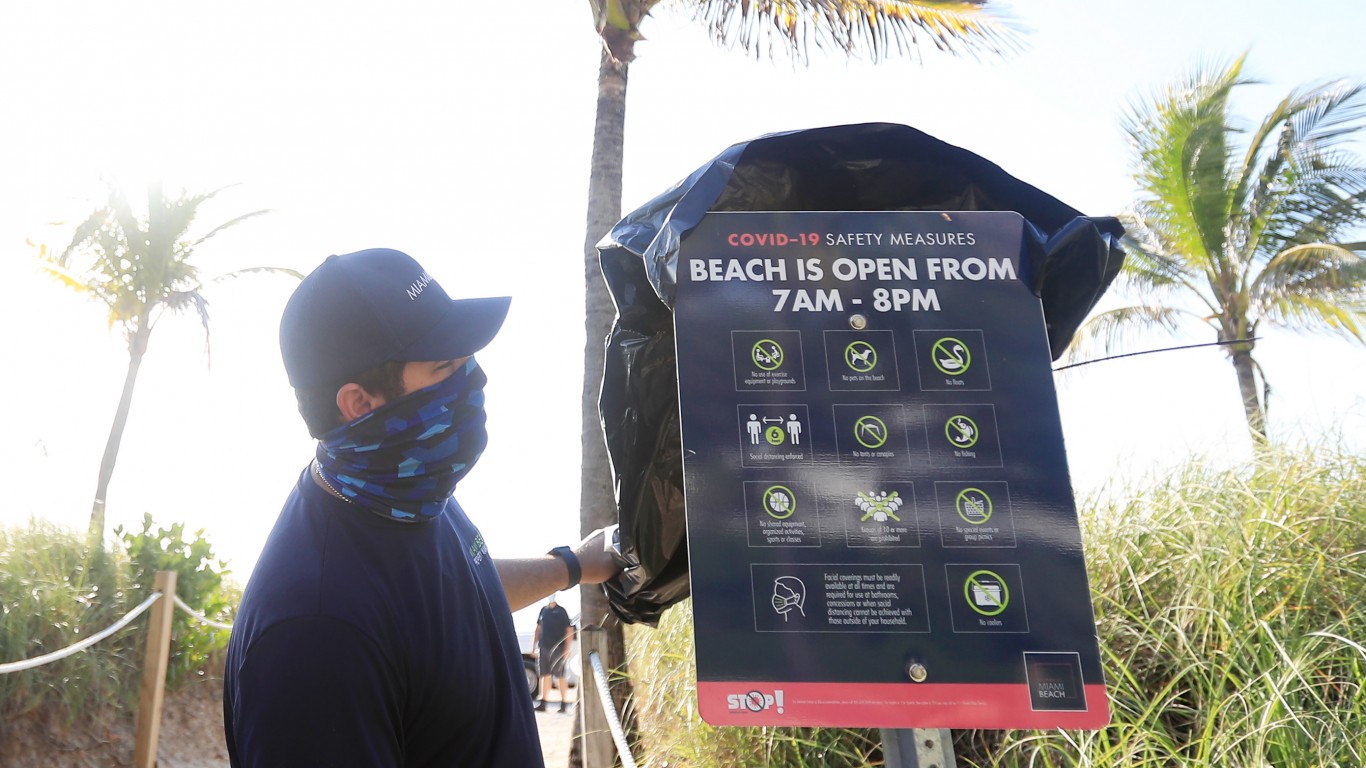
Jun 24: 26 states report a rise in coronavirus cases since easing lockdowns
At least 26 states, mostly in the South and West, report a rise in the average daily coronavirus cases compared to two weeks prior, when states began easing lockdown restrictions.

Jun 29: Global coronavirus death toll surpasses 500,000
Half a million people around the world have died from COVID-19, the disease the novel coronavirus causes. About a quarter of the fatalities are in the U.S. The WHO warns that the worst of the pandemic is yet to come.
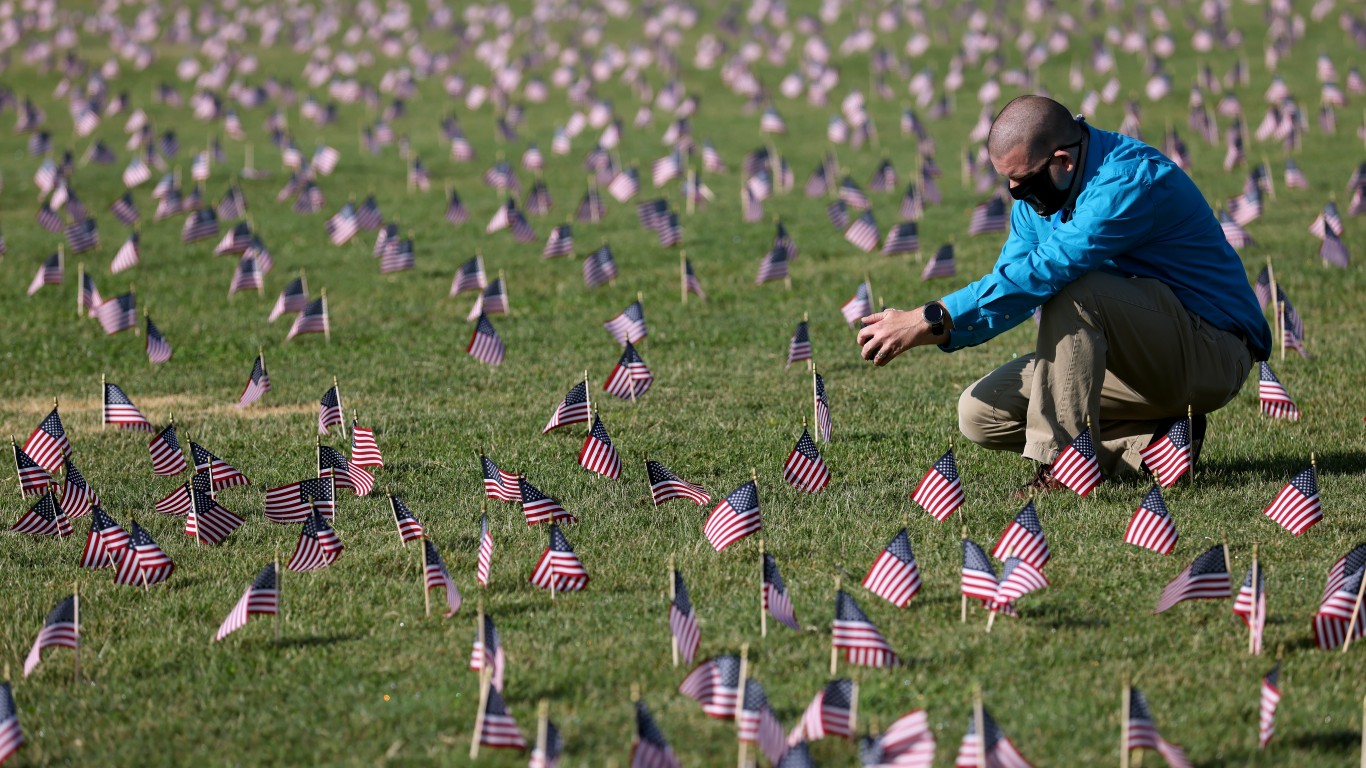
Jul 2: US reports over 55,000 new coronavirus cases, a global daily record
The U.S. reaches a global record for new daily coronavirus cases, reporting more than 55,000 new COVID-19 cases on July 2 in a day. The U.S. reports 55,274 confirmed cases on July 2, exceeding the previous single-day record of 54,771, set by Brazil on June 19.
[in-text-ad-2]
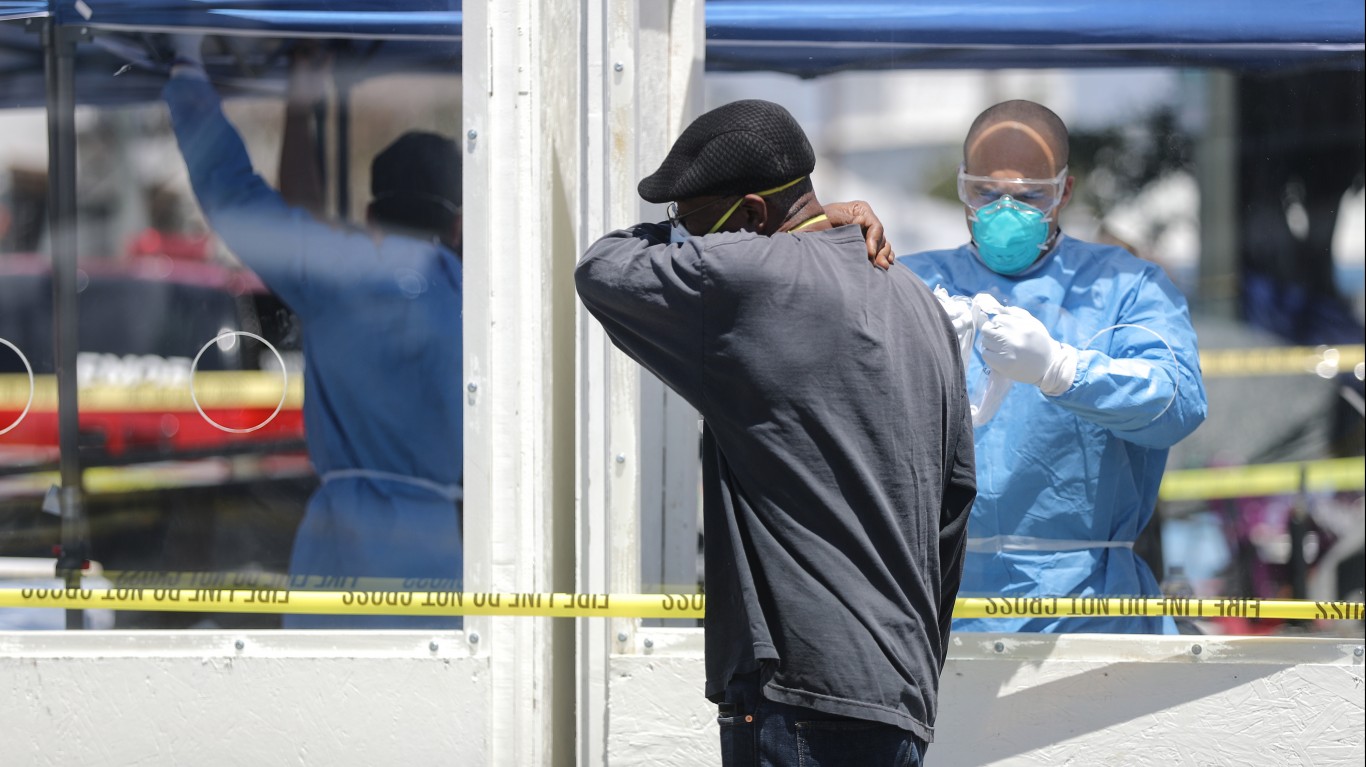
Jul 7: WHO acknowledges growing evidence of airborne coronavirus spread
The WHO acknowledges that there is emerging evidence that the coronavirus can be spread by tiny particles suspended in the air. So far, scientists have warned of spread by large droplets. The evidence of airborne spread means that transmission could not be ruled out in public settings, even when social distancing and masking is maintained and especially in crowded, closed or poorly ventilated settings, according to a WHO official.
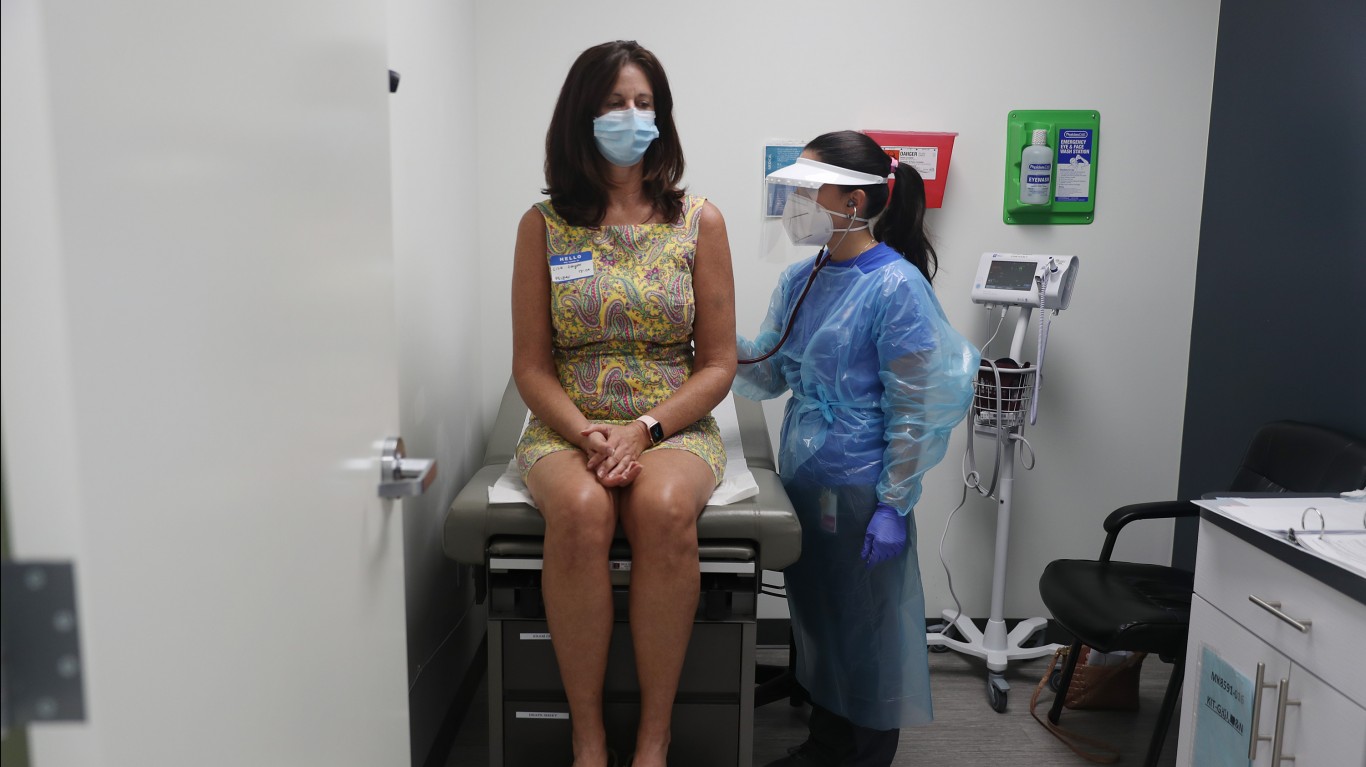
Jul 27: Moderna begins Phase 3 COVID-19 vaccine trials in the US
The first Phase 3 clinical trial of a coronavirus vaccine developed by biotechnology company Moderna and the National Institute of Allergy and Infectious Diseases begins in the United States. The trial is to be conducted at nearly 100 research sites and aims to enroll approximately 30,000 adults who do not have COVID-19.
[in-text-ad]

Aug 11: Russia first to approve a COVID-19 vaccine
Russia announces that its health regulator has approved a coronavirus vaccine for widespread use, becoming the first country in the world to do so. The news, however, is met with much criticism by scientists across the world who condemn Russia for skipping large trials to test the vaccine’s safety and efficacy.

Aug 24: First case of COVID-19 reinfection reported in Hong Kong
A 33-year-old man in Hong Kong is reported to have contracted the virus again, about 4.5 months after first being infected with the novel coronavirus. Still, little remains known about the body’s immunity to COVID-19, if any, the body develops after being exposed to the virus against the novel coronavirus once it has been exposed to it.

Sep 9: US to stop screening international arrivals for COVID-19
The U.S. announces it will no longer screen passengers arriving from other countries for COVID-19 and that international flights will no longer be required to fly into one of the 13 airports where enhanced coronavirus screening measures are carried out.
[in-text-ad-2]
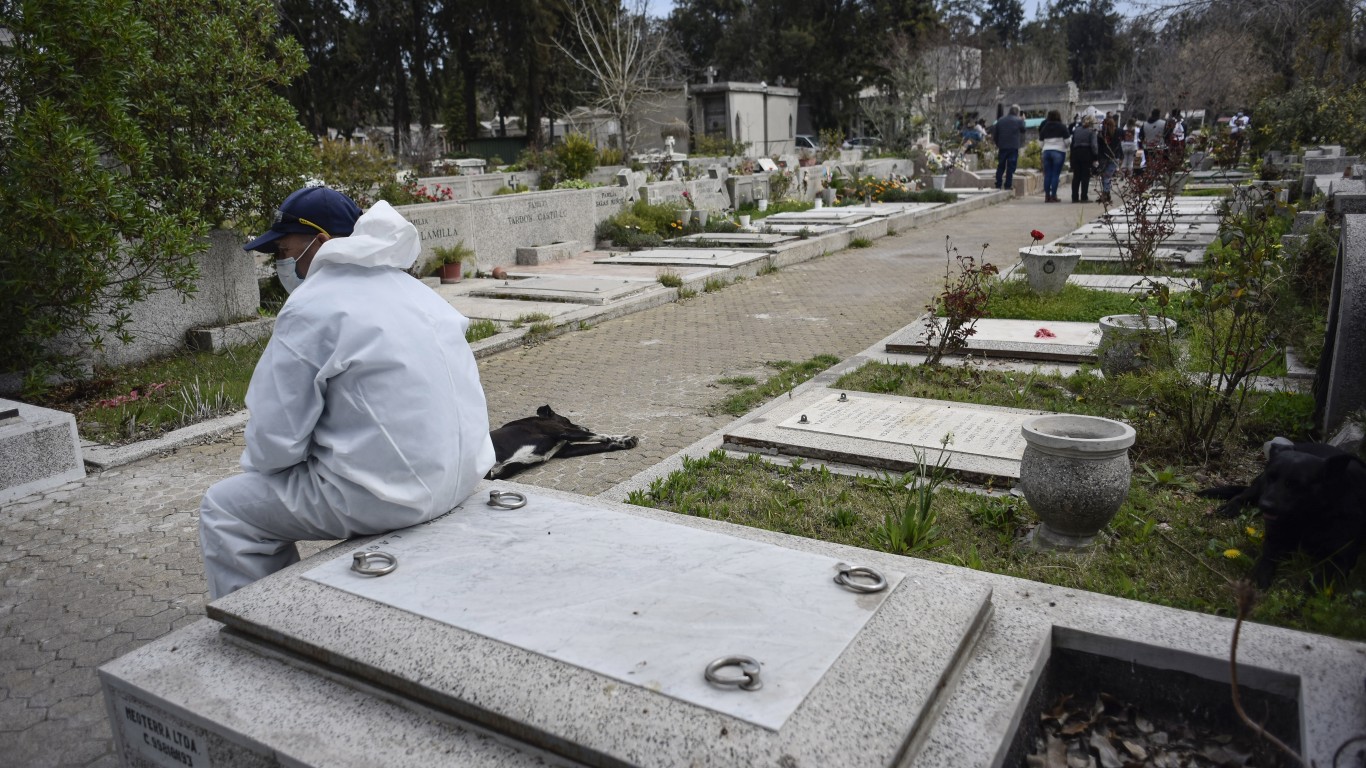
Sep 28: Global death toll hits 1 million
Coronavirus global death toll hits 1 million people less than 10 months after first case reported in Wuhan, China.
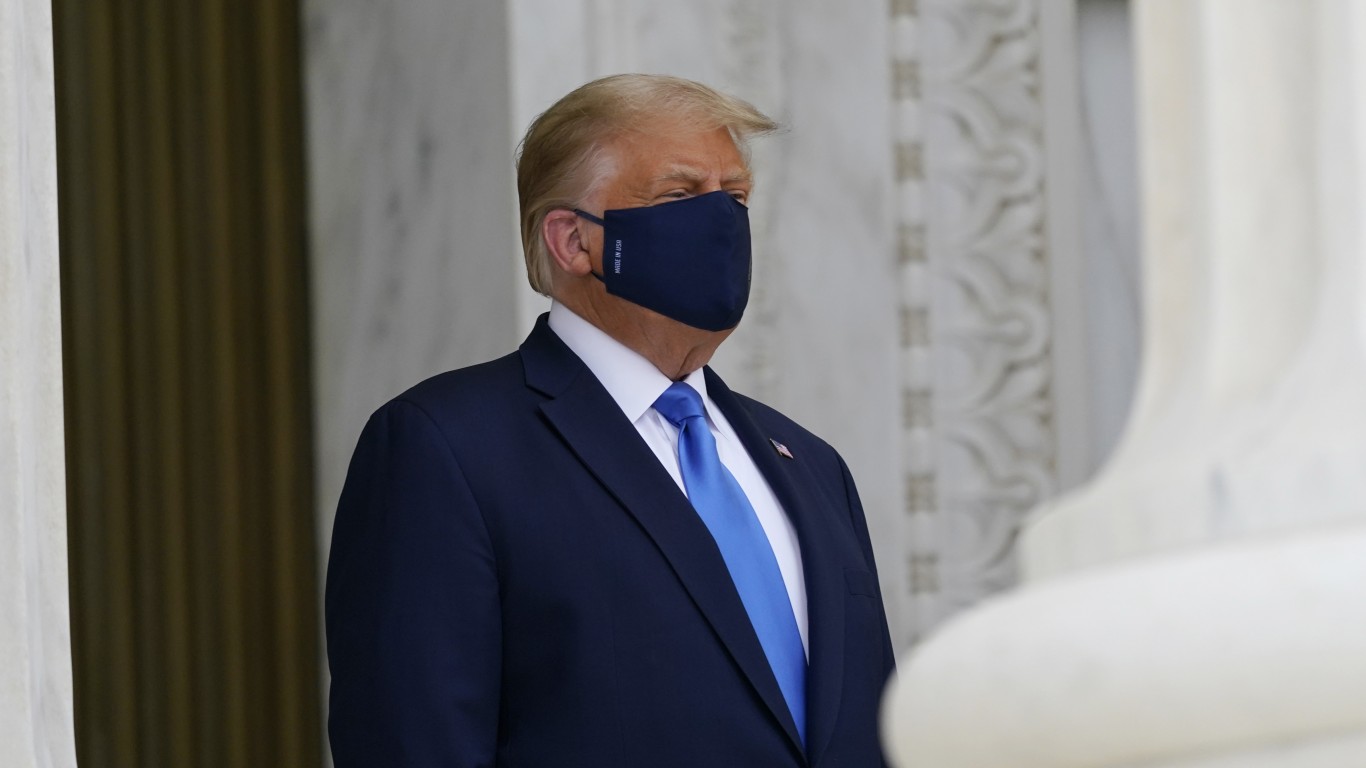
Oct 2: Trump and first lady test positive for the coronavirus
Trump tweets that he and first lady Melania Trump have tested positive for coronavirus and are now self-isolating. The president is 74, which puts him in a high-risk group.
[in-text-ad]

Oct 19: Global cases surpass 40 million
More than 40 million coronavirus infections have now been reported worldwide. About 1.1 million people have died, including nearly 220,000 in the U.S.
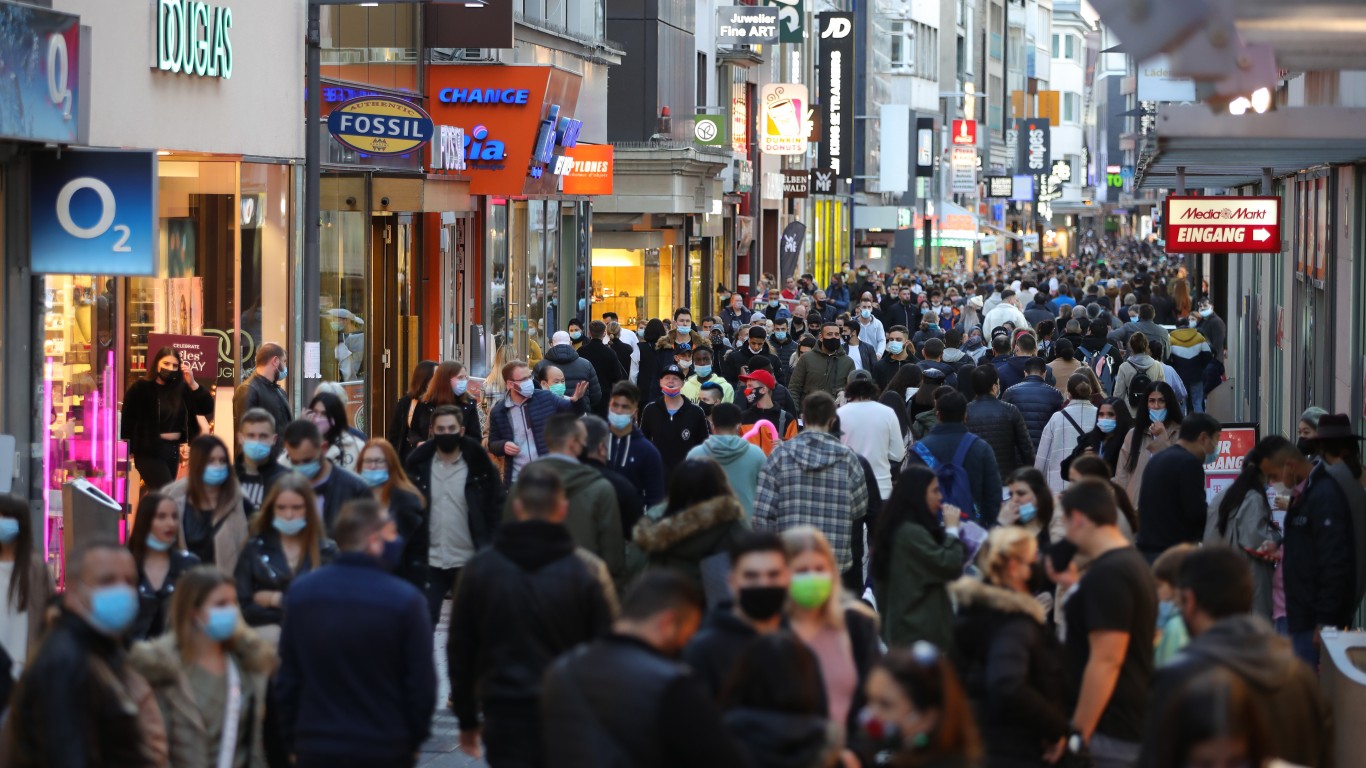
Oct 29: Europe is again the ‘epicenter’ of the pandemic
WHO European regional director announces that the continent has become once again the “epicenter” of the global coronavirus pandemic. As many as 1.5 million new COVID-19 confirmed infections were reported in Europe in one week.
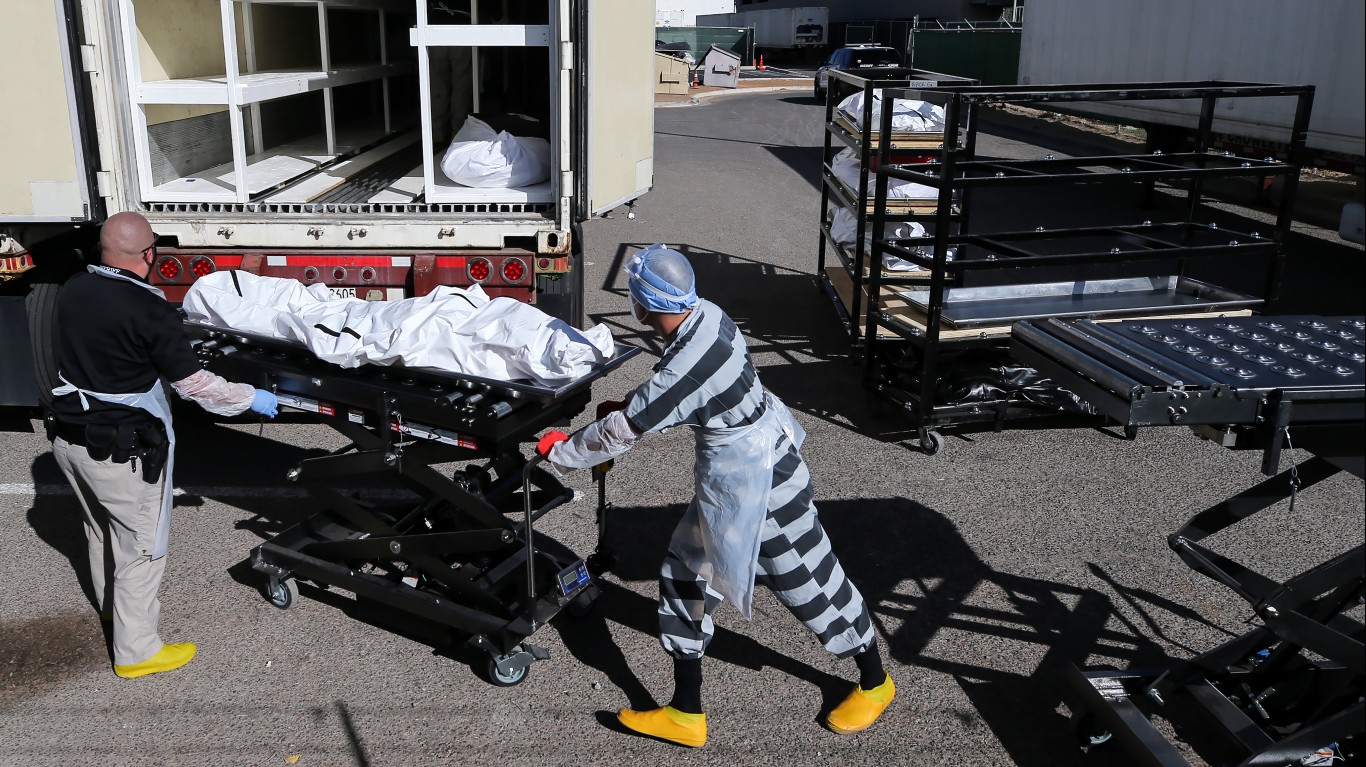
Nov 18: US death toll hits 250,000
COVID-19 has now killed more than a quarter of a million people in the U.S. That is about the entire population of Buffalo, New York.
[in-text-ad-2]
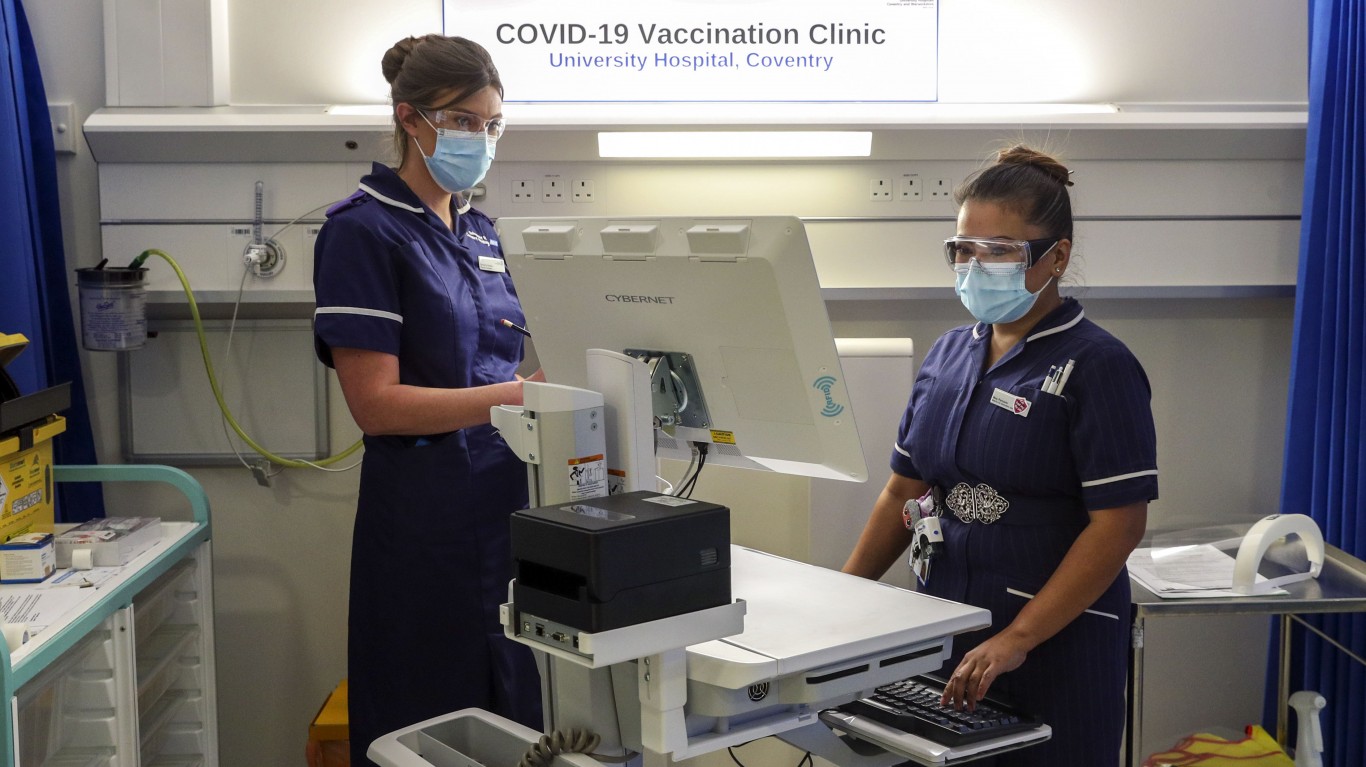
Dec 7: UK first to roll out the Pfizer-BioNTech vaccine
In the U.K., a 90-year-old woman becomes the first person in the world to be given the Pfizer-BioNTech COVID-19 vaccine as part of a mass vaccination program. People who are 80 and over and who are either in a hospital or are being discharged after a hospital stay are the first to receive the vaccine in the U.K.
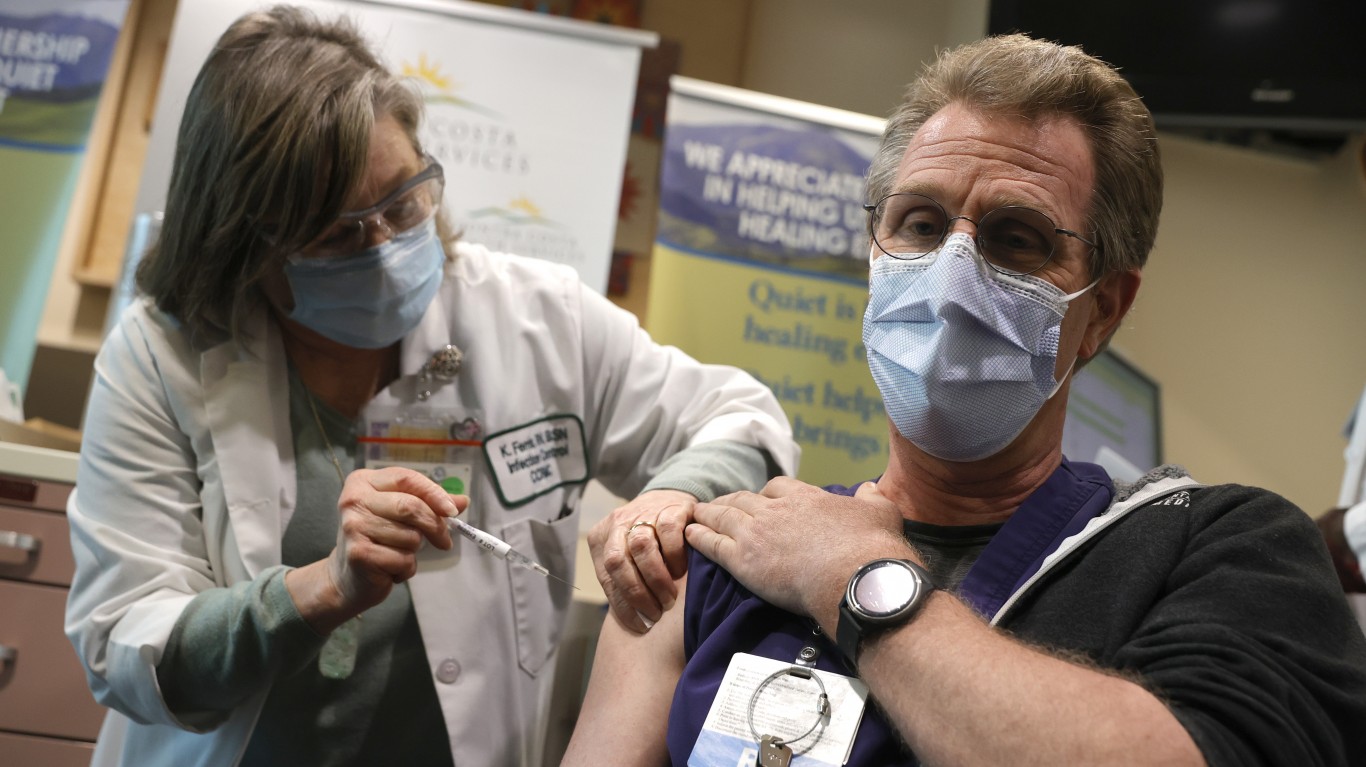
Dec 14: US begins vaccinating population with Pfizer vaccine
The Pfizer-BioNTech vaccine against COVID-19, the first federally approved coronavirus vaccine in the U.S., is administered to health care workers and staff at nursing homes nationwide.
[in-text-ad]
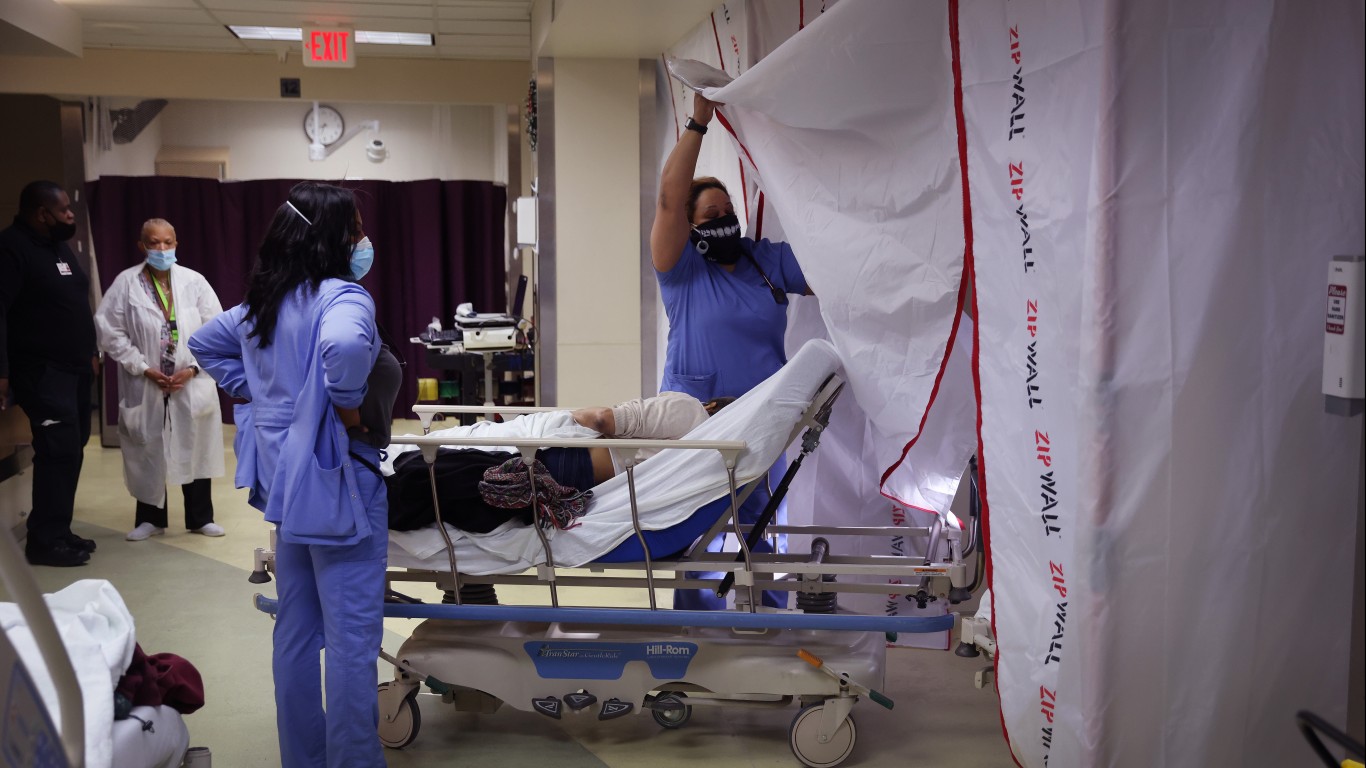
Dec 14: US death toll hits 300,000
The U.S. death toll from the coronavirus tops 300,000 — the day the country begins dispensing COVID-19 shots in a campaign to stop the pandemic.

Dec 15: FDA finds Moderna vaccine safe
The U.S. Food and Drug Administration confirms the effectiveness and safety of the Moderna COVID-19 vaccine, clearing a path to authorization. The potential second COVID-19 vaccine is found to be 95% effective.
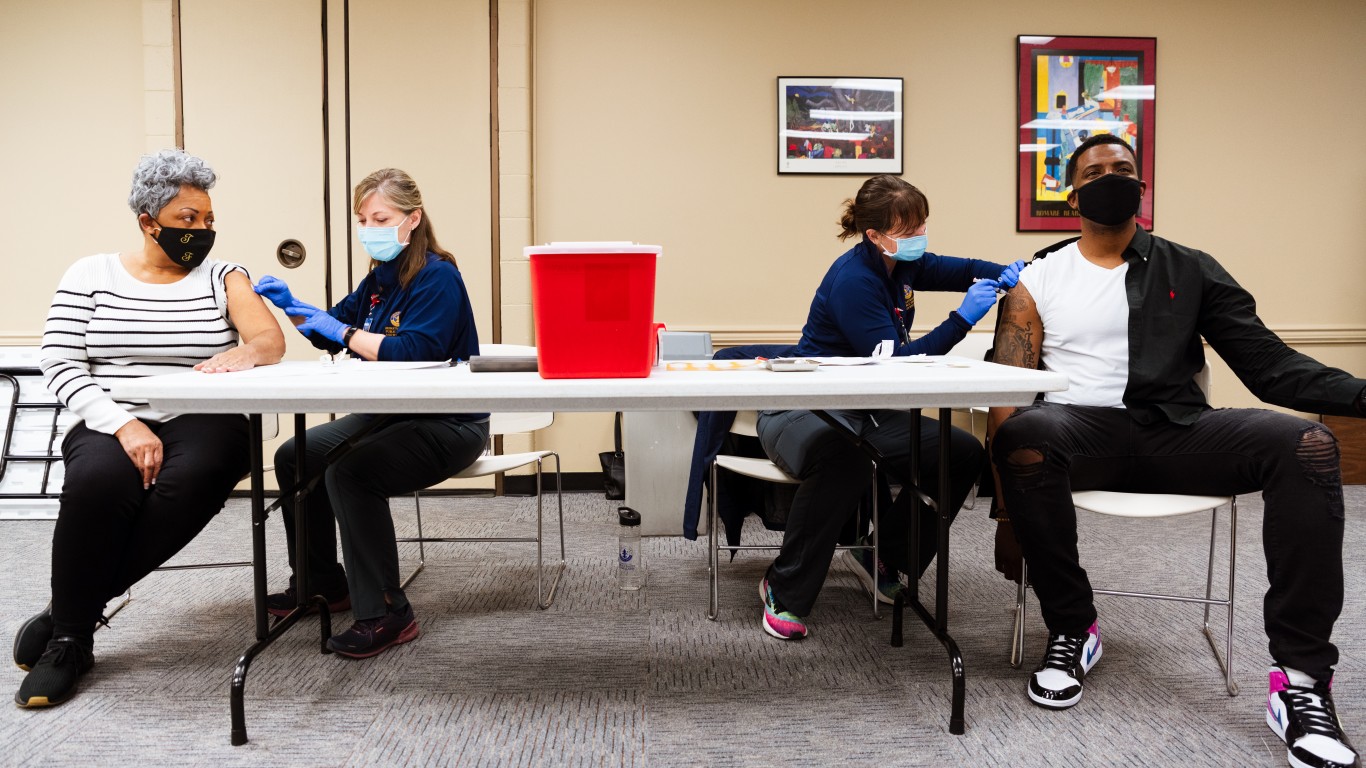
Dec 21: States receive first Moderna vaccines
A week after the first doses of the Pfizer-BioNTech coronavirus vaccine were administered in the US, a new batch of vaccines, made by Moderna, fanned out across the country. Moderna’s vaccine rollout is four times larger than Pfizer’s.
[in-text-ad-2]
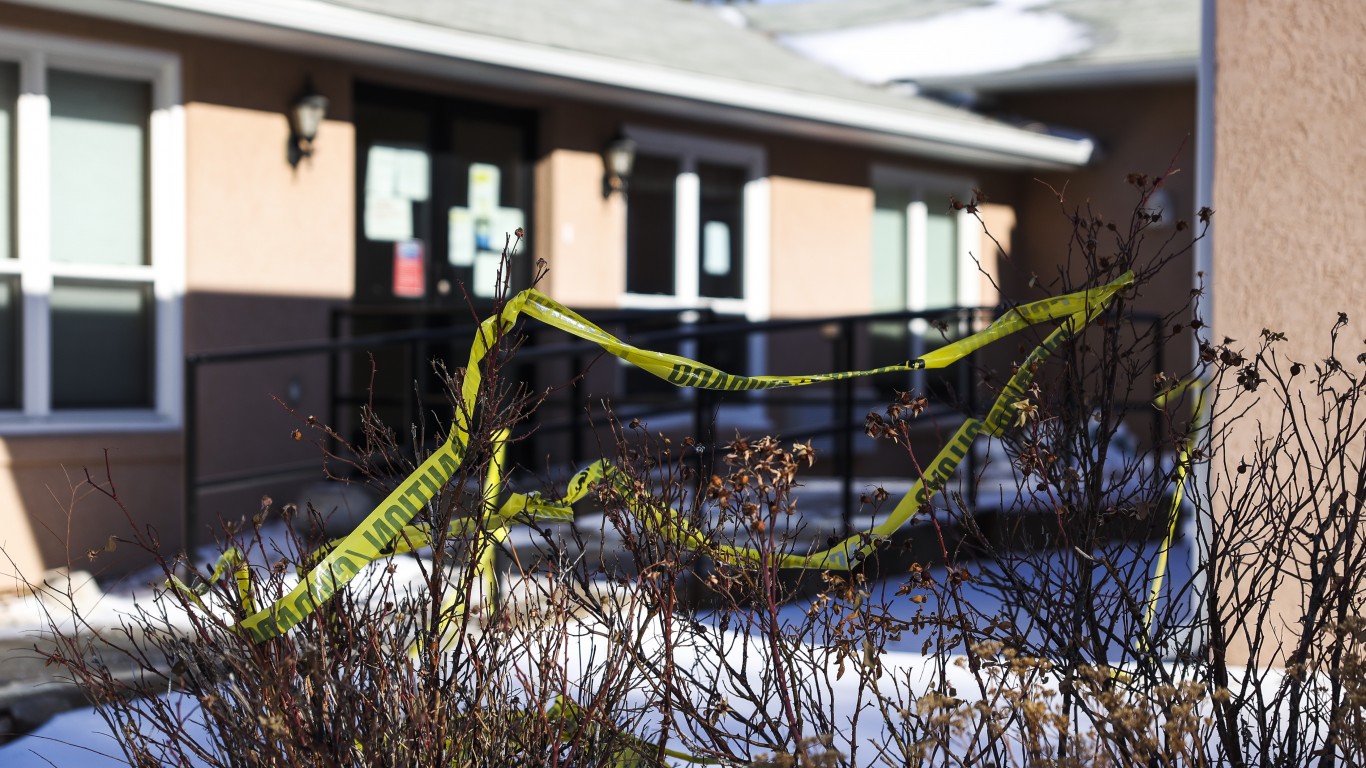
Dec 29: First US case of new COVID-19 variant found in Colorado
The first U.S. case of the more contagious COVID-19 variant first reported in the U.K. has been reported in Colorado, a week after British scientists identified the variant.
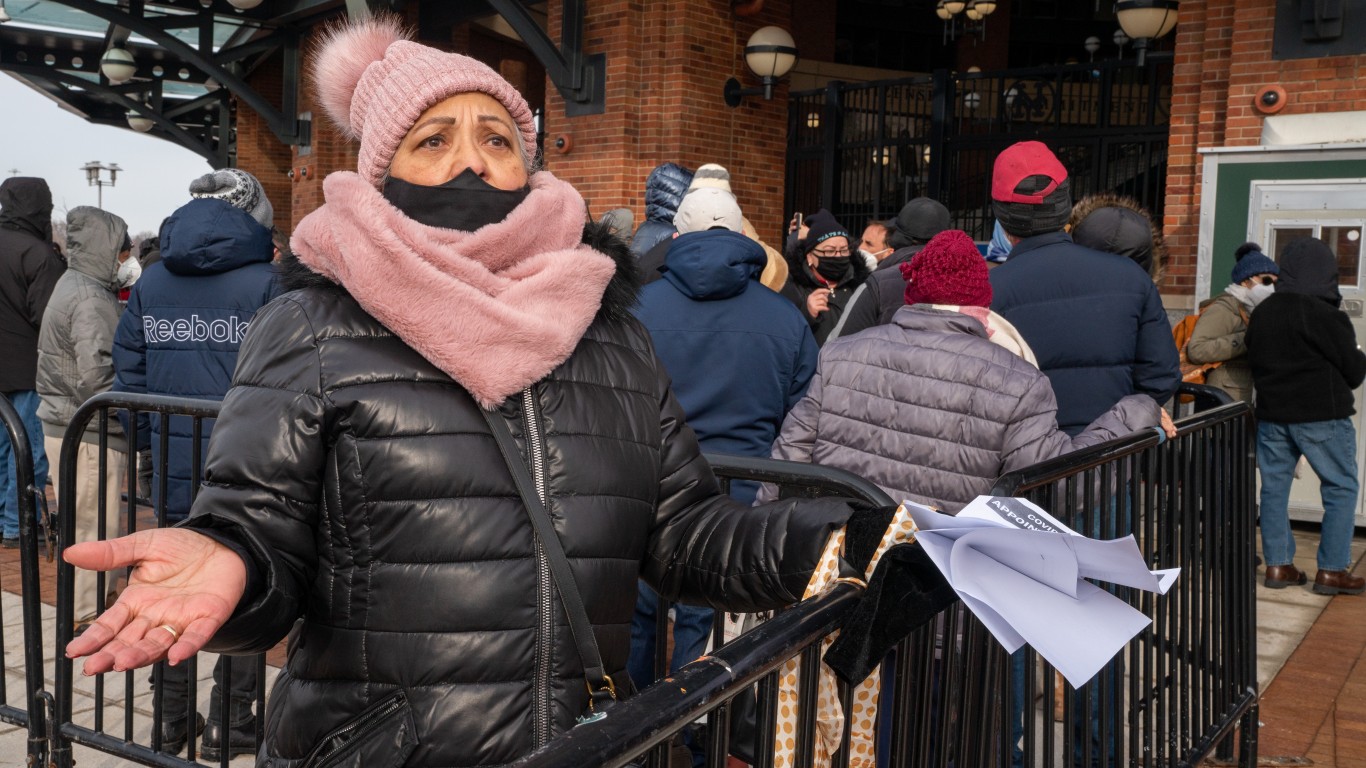
Dec 31: US falls short of goal to vaccinate 20 million Americans by end of 2020
The federal government does not meet its goal to administer 20 million coronavirus vaccines by year end due to logistical problems and underfunded health departments. By Dec. 31, 2.8 million people had received the first of two doses needed to provide immunity to the virus, according to the CDC.
[in-text-ad]
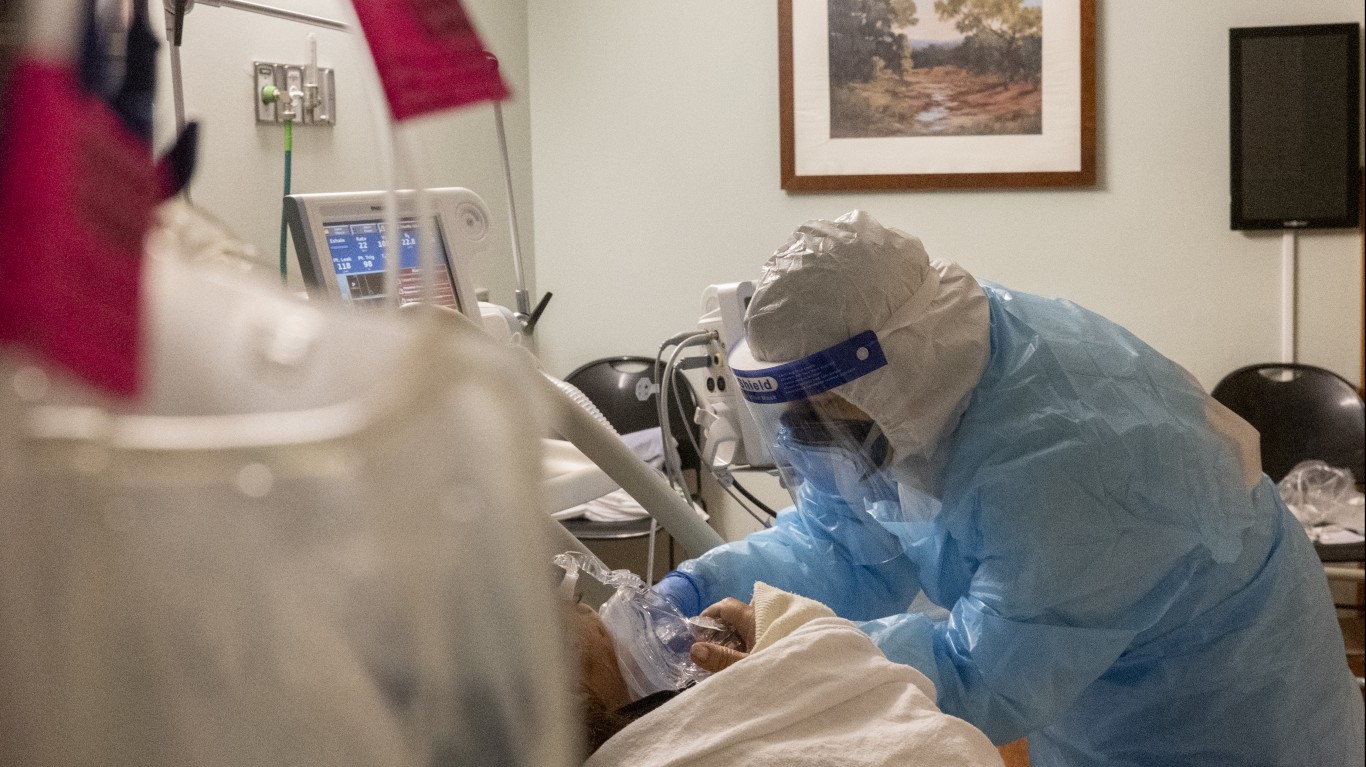
Jan 13: US passed 23 million cases
Just four days after passing 22 million cases, the U.S. tops 23 million confirmed COVID-19 cases. Almost 384,000 people in the country have died, accounting for about 19% of the nearly 2 million COVID-19 deaths reported around the world.
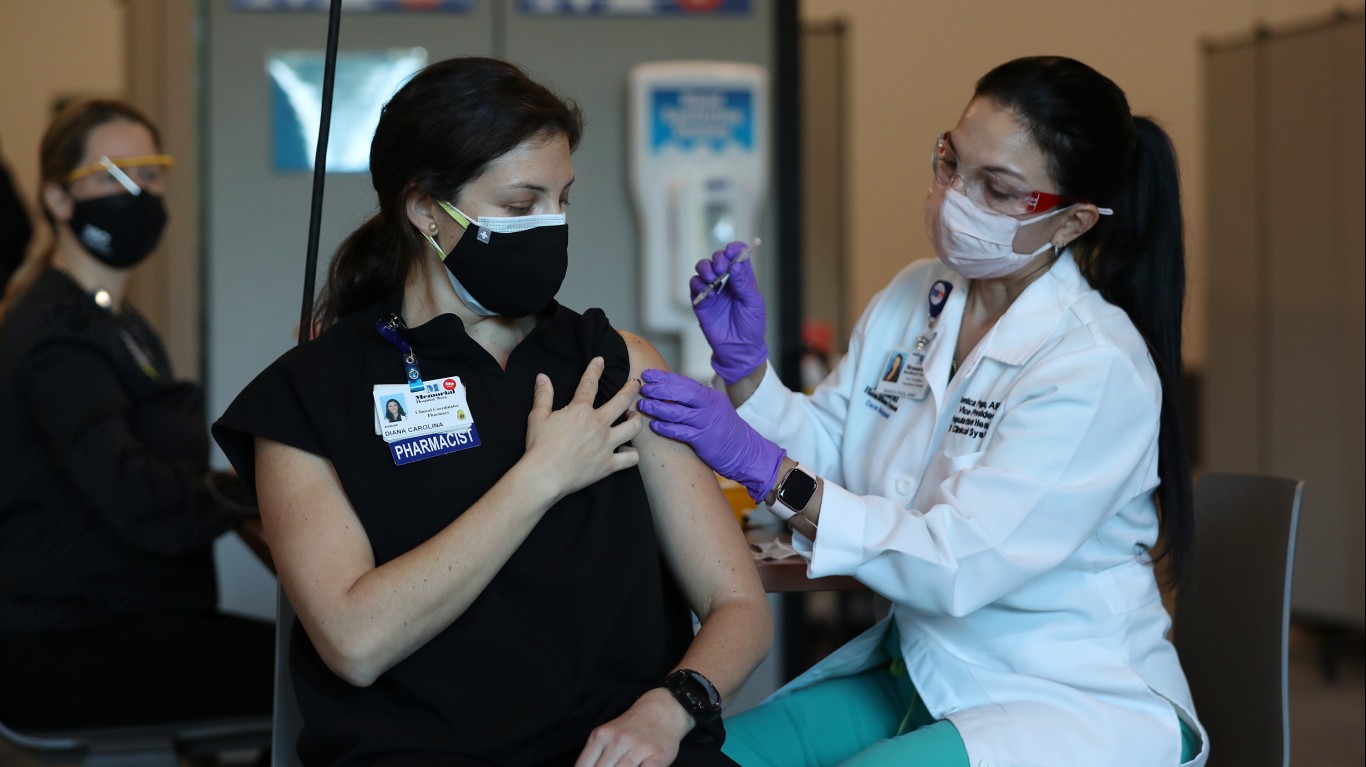
Feb 11, 2021: US reaches deal for 200 million vaccines doses
The U.S. government announces it will buy 200 million more doses of the COVID-19 vaccines that have so far been approved for use in the country, a step that may provide enough doses to fully inoculate almost every American eligible for the vaccine by the end of the summer.
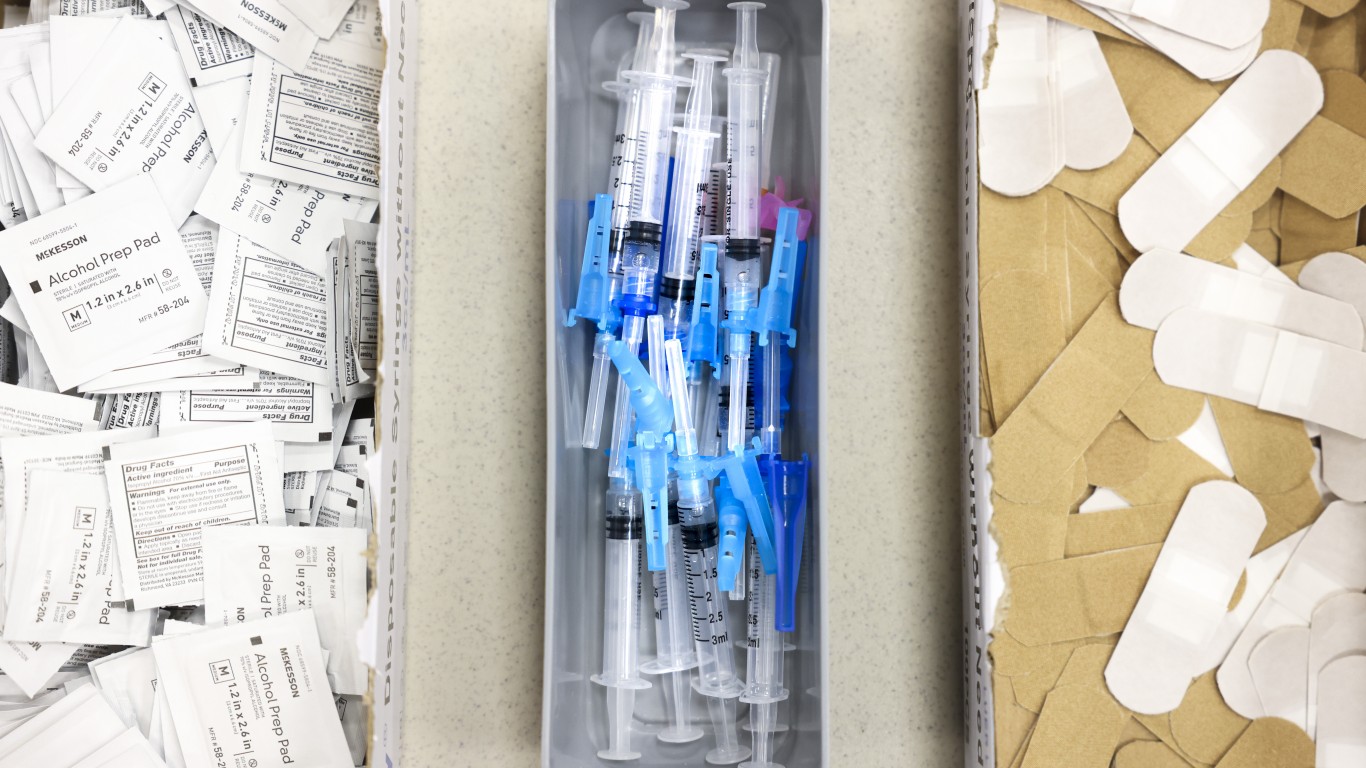
Feb 27, 2021: FDA authorizes Johnson & Johnson COVID-19 vaccine
The FDA authorizes Johnson & Johnson’s single-shot vaccine for emergency use. Rollout of the third COVID-19 vaccine would start two days later. The company pledged to provide the U.S. with 100 million doses by the end of June.
[in-text-ad-2]
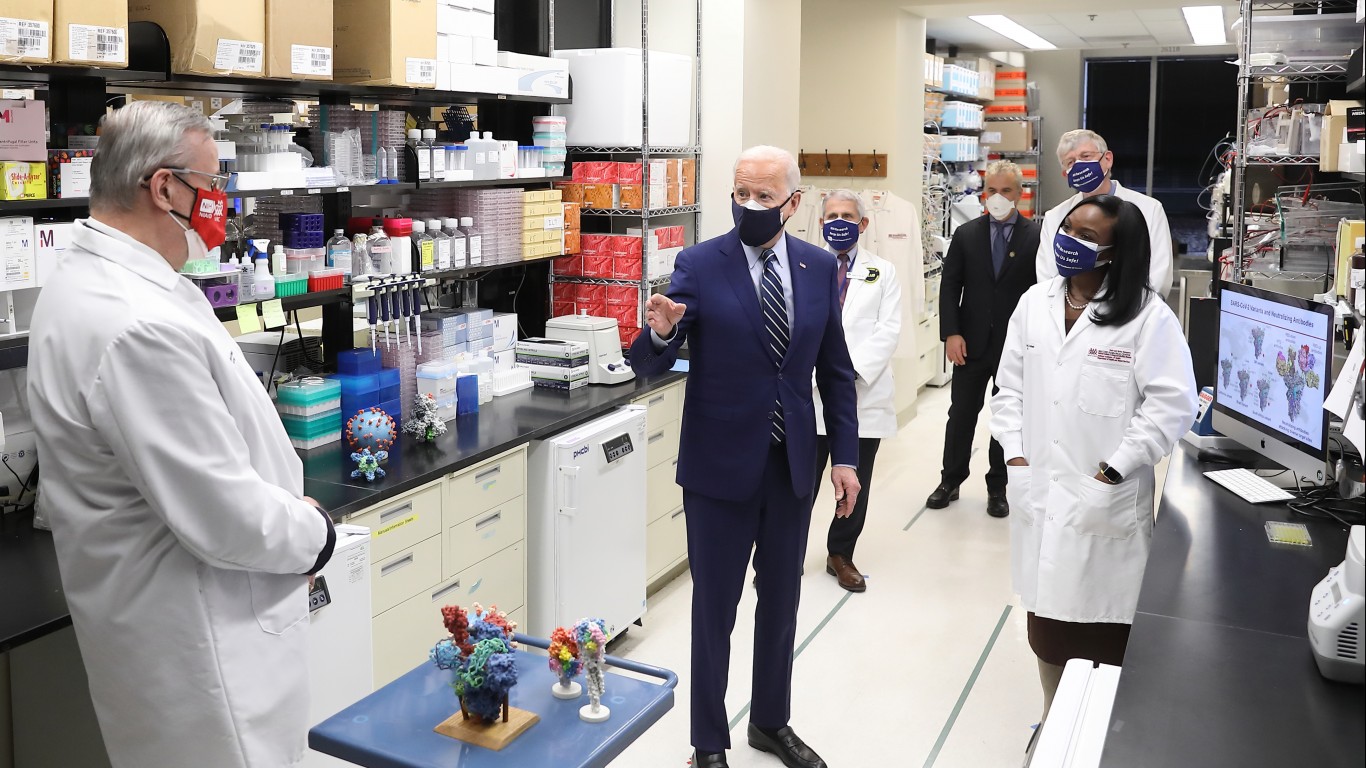
Mar 2, 2021: Biden says US will have enough vaccines for all American adults by end of May
President Joe Biden announces the U.S. expects to receive enough coronavirus vaccine doses for all adults by the end of May, two months earlier than anticipated. As of March 2, 2021, 8% of the U.S. adult population has been fully vaccinated. About 80%-90% is needed for herd immunity.
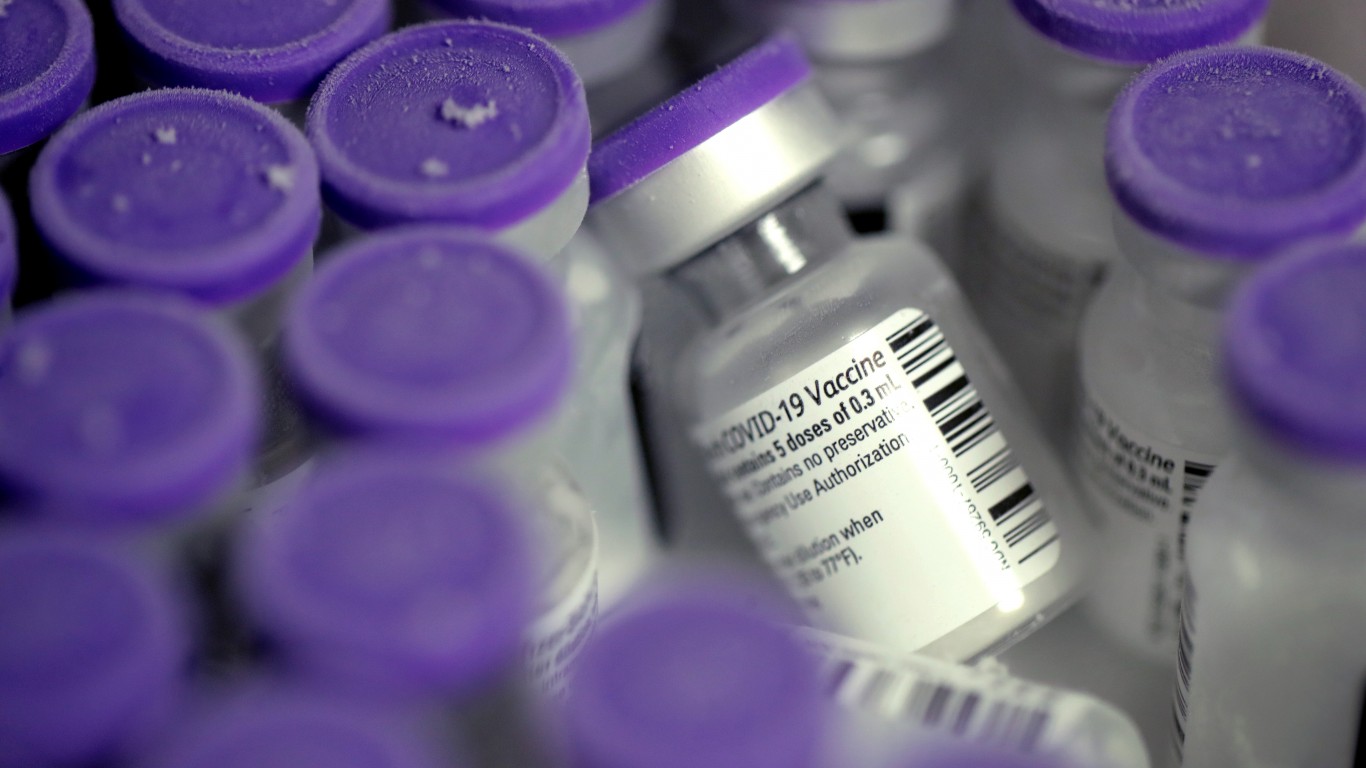
March 11, 2021: More than 8 million COVID-19 vaccine doses administered per day worldwide
According to data collected by Bloomberg, more than 326 million COVID-19 vaccine doses developed by various companies have been administered across 121 countries as of March 10, 2021, exactly a year since the coronavirus was declared a pandemic. The latest rate was roughly 8.35 million doses a day.
In the U.S., about 96 million doses have been administered, with the rate last week coming to an average of about 2.17 million doses a day, according to the CDC.
Thank you for reading! Have some feedback for us?
Contact the 24/7 Wall St. editorial team.